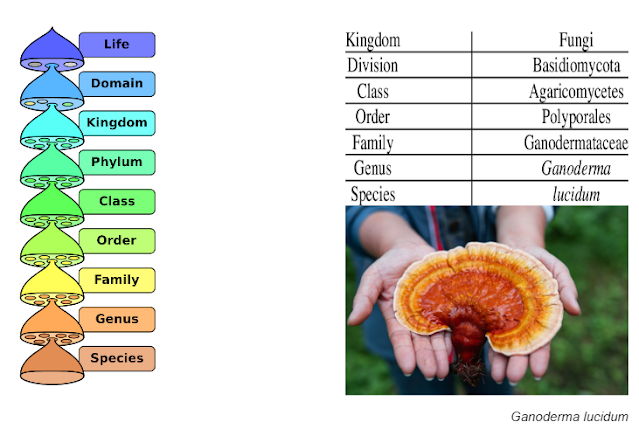Layers of Life: Understanding the Taxonomic Ranking of Mushrooms
Taxonomic Ranking
Before we can name an organism, understanding taxonomic rank is crucial. It is the relative level of a group of organisms (a taxon) in an ancestral or hereditary hierarchy.
A common system of biological classification (taxonomy) consists of species, genus, family, order, class, phylum, kingdom, and domain.
When identifying a mushroom species visually (without a microscope) and focusing on morphological characteristics and traits, I’m usually trying to get to Family, then Genus, and hopefully the Section (like a group within a Genus that shares similar characteristics). Kind of like a funnel, starting broad and narrowing down to a more specific level once more evidence is produced.
Side note: while taxonomy—the scientific naming of species—can sometimes be tedious or pedantic, the key is to build a personal connection with these fascinating organisms and understand the vital roles they play in ecosystems. I believe this connection fosters stewardship and conservation.
I highly recommend watching this short seven-minute video that resonates with how I feel about What Field Guides Don't Tell You About Mushrooms
How Many Mushroom Species Are There?
The exact number of mushroom species is difficult to determine because new species are constantly being discovered, and there is significant genetic diversity within fungi. However, scientists estimate there are about 140,000 to 150,000 described species of fungi, of which roughly 10% to 20% produce mushrooms (the fruiting body that you see above ground, like an apple on a tree).
In terms of ranking against other organisms:
Biodiversity: Fungi, as a whole, represent one of the largest and most diverse groups of organisms on Earth. While the total number of fungal species is debated, some estimates suggest that there could be over 2.2 million to 3.8 million fungal species worldwide, which would make fungi more diverse than plants but less diverse than insects.
Comparison to Other Kingdoms: The kingdom Fungi is among the top in terms of species diversity. For comparison:
Insects: There are about 1 million described species, with estimates suggesting there could be as many as 5 million or more.
Plants: There are approximately 391,000 described species of vascular plants.
Vertebrates: There are around 66,000 described species of vertebrates (fish, amphibians, reptiles, birds, and mammals).
So, while fungi, including mushrooms, rank below insects and plants in terms of described species, they still represent one of the most diverse groups of organisms on the planet. Fungi play a critical role in ecosystems as decomposers, symbionts, and sometimes pathogens, making them incredibly important despite their ranking in species diversity.
Understanding Scientific Naming
While common names are easier to remember, they can vary widely and mean different things to different people. Scientific names, on the other hand, are unique identifiers based on a formal system called binomial nomenclature, typically derived from Latin or Greek roots. More recently, roots from other languages have been used as well.
Here’s how scientific names work: they are always written in italics, with the genus capitalized and the species in lowercase. For example, Mycena pura, not Mycena Pura.
Staying Updated on Taxonomy
One of the challenges with taxonomy is that it’s a constantly evolving field. Just when you memorize a name, it might change. To stay updated, I recommend referring to Index Fungorum. This resource provides the latest research, showing both current and previous names, along with synonyms.



Comments
Post a Comment